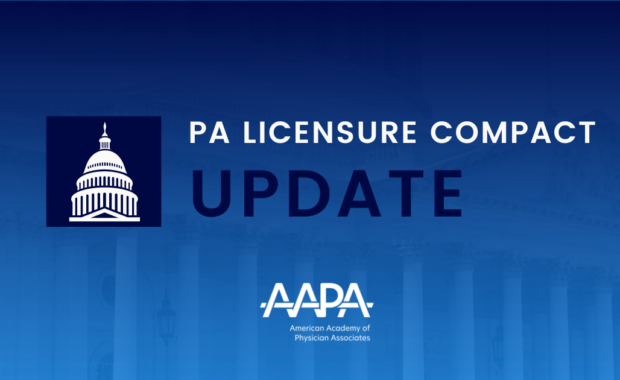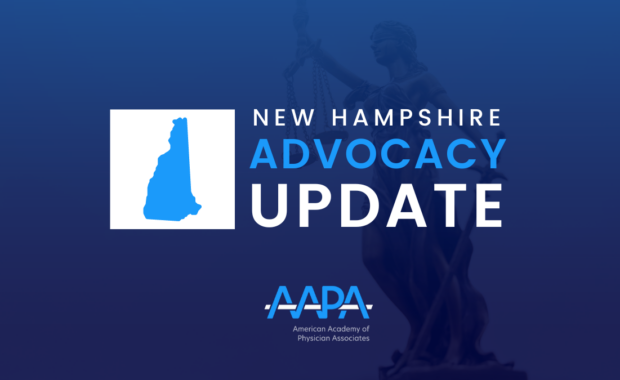Learning from Real World Malpractice Cases
Examples Underscore Critical Need for Liability Insurance
SPONSORED
 As the healthcare landscape undergoes a transformation, the role of Physician Assistants/Physician Associates is expanding, drawing heightened attention. The era of infrequent legal challenges for PAs has shifted, and today, they encounter increased scrutiny. This blog post will examine two real-life cases involving PAs, explore legal challenges, and delve into potential solutions applicable to PAs and other healthcare providers in this evolving healthcare environment.
As the healthcare landscape undergoes a transformation, the role of Physician Assistants/Physician Associates is expanding, drawing heightened attention. The era of infrequent legal challenges for PAs has shifted, and today, they encounter increased scrutiny. This blog post will examine two real-life cases involving PAs, explore legal challenges, and delve into potential solutions applicable to PAs and other healthcare providers in this evolving healthcare environment.
Case Study 1: Missed Diagnosis Leading to Death – Stevens-Johnson Syndrome
Background: In this case, a 76-year-old female patient presented to a dermatology practice with an unexplained rash. She sought medical attention due to the worsening of her condition, which tragically led to her death.
Medical Team: The medical team responsible for her care included a PA and a supervising physician.
Timeline:
- The patient initially sought medical attention for her rash, which was examined by the PA.
- Despite initial treatment, her condition continued to deteriorate.
- Legal Proceedings: The patient’s family filed a malpractice lawsuit against both the PA and the supervising physician for failing to diagnose her promptly with Stevens-Johnson syndrome.
Outcome:
- After years of legal proceedings, the PA was eventually dropped from the case.
- The case underscored the importance of diligent care and meticulous documentation.
- Shared responsibilities between PAs and supervising physicians were emphasized to ensure accurate diagnoses and comprehensive patient care.
Case Study 2: Failure to Detect Tendon Damage
Background: In this case, a 51-year-old male patient sustained a foot laceration and sought medical attention from an emergency department physician and a PA. The undetected tendon damage in this case had severe consequences.
Medical Team: The medical team responsible for this patient’s care included an emergency department physician and a PA.
Timeline:
- The patient sustained a foot laceration and received initial treatment from the emergency department physician and the PA.
- Despite follow-up care, tendon damage went undetected.
- Legal Proceedings: The patient filed a malpractice lawsuit against the PA for missing the diagnosis of tendon lacerations.
Outcome:
- The PA was ultimately removed from the case, highlighting the significance of thorough examination and communication between healthcare professionals.
- Effective communication between PAs and physicians in scenarios requiring collaboration was emphasized to ensure accurate diagnoses and comprehensive patient care.
These case studies illustrate the real-world complexities and challenges faced by PAs in malpractice claims, emphasizing the importance of accurate diagnoses, communication, comprehensive patient care, and career/license protection.
Mitigating Malpractice Risks
While malpractice risks are inherent in the medical field, there are several proactive measures PAs can take to minimize their exposure:
- Continuing Education: Stay current with medical advancements and best practices through ongoing education and training.
- Thorough Documentation: Maintain meticulous and accurate patient records to support the care you provided and decisions you made.
- Effective Communication: Foster open communication with patients, colleagues, and supervisors to ensure a comprehensive understanding of each patient’s condition.
- Adherence to Protocols: Always adhere to established protocols, guidelines, and best practices in diagnosing and treating patients.
- Supervision and Consultation: Seek guidance from supervising physicians when faced with complex cases or uncertainty.
- Patient Education: Empower patients to make informed decisions by explaining diagnoses, treatment options, and potential risks.
- Liability Insurance: Consider carrying your own liability insurance, even if your practice or hospital provides coverage, to protect your interests and provide a dedicated attorney.
The Importance of Liability Insurance
These real-life examples underscore the critical need for liability insurance. As PAs, you are personally liable for your actions and must protect yourself from potential financial devastation. Occurrence-based insurance is generally recommended as it covers claims arising from incidents during the policy period, regardless of when the claim is filed. Claims-made insurance only covers incidents reported during the policy period and requires tail coverage if you leave the policy.
Tail Coverage and Asset Protection
For PAs transitioning between positions or leaving clinical practice, understanding the need for tail coverage is essential. Tail coverage extends protection beyond your active policy, ensuring you’re covered even after you leave a practice. In addition, consulting with legal and financial experts about asset protection strategies, such as forming an LLC for personal property, can provide an additional layer of security.
Considerations When Choosing Insurance
When deciding on insurance, assess whether your employer provides adequate coverage and if it includes malpractice and license defense. Personal liability policies are a smart investment to cover yourself and your assets, providing you with an attorney if you face a lawsuit.
Conclusion
As you navigate your role as a PA, it’s important to acknowledge the reality of malpractice claims. Understanding the scope of your liability and obtaining the right insurance coverage are essential steps in safeguarding your professional career. Staying vigilant in providing quality care and adhering to best practices will further minimize the risk of malpractice claims. Let us continue to learn from these real-world examples and work toward maintaining the highest standards of care in the PA profession. Stay safe and committed to delivering exceptional healthcare!
Thank you for reading AAPA’s News Central
You have 2 articles left this month. Create a free account to read more stories, or become a member for more access to exclusive benefits! Already have an account? Log in.



